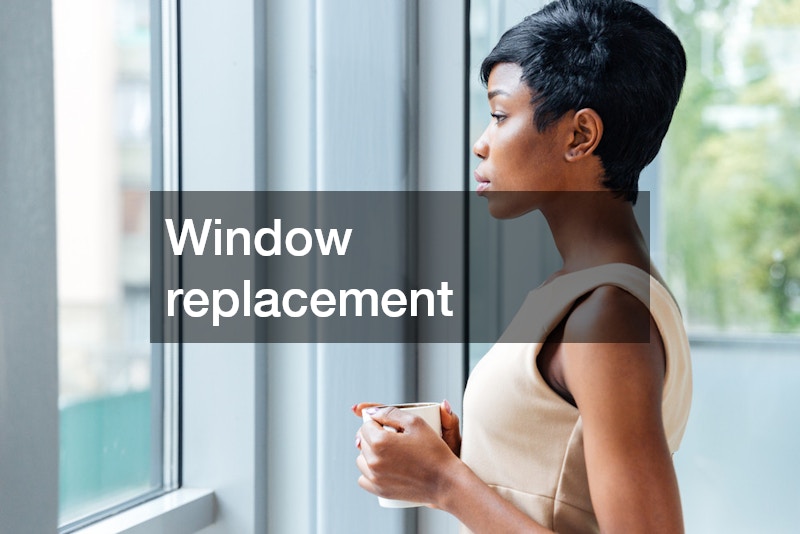
Window replacement is often sought after to improve energy efficiency in homes and businesses. However, that is not the only benefit of replacement windows. New windows can help to cancel outdoor noise and add a level of soundproofing.
Keeping outdoor noise outside where it belongs is essential to creating a peaceful workspace or home environment. Noisy outside soundproofing using a layered approach will restore peace. Soundproofing is especially important if you live or work on a busy street or have noisy neighbors. Outdoor noise can be a great distraction and a stressor. It can be easily addressed with the right materials.
Soundproof storm windows have noise-canceling properties that effectively reduce a large percentage of noise that can seep in through windows. Adding soundproof shutters can deaden the noise even further. Window panels designed to keep out noise can also improve privacy.
Enhancing privacy by keeping the sound inside and the noise outside can help to create a peaceful atmosphere while protecting the information you don’t want anyone else to hear. Soundproofing your home or business provides peace of mind and quiet. Learn how you can use modern materials like soundproofing window panels to your advantage to soundproof your space.

If you live in an old home or share a workspace in a very active building, you be looking at sound absorbing ceiling panels or sound insulation walls to keep outside noise from coming in — and potentially noise from your home or business from leaking out into others’ work spaces or homes. If you work in the music or film industry, for example, you may have special rooms with sound absorbing ceiling panels or soundproof wall panels for maximum concentration and minimum irritation. If you have home gym, movie theatre, or have active children, having sound insulation panels or soundproofing built into your home can be a godsend for not only you, but those around you. Have a teen who wants to start his own band and irritable neighbors? Time to start looking at sound absorbing ceiling panels and soundproofing walls!
Reduce Your Contribution to Community Noise
Over 25 million people who are between the ages of 20 and 69, have high frequency hearing loss thanks to being around noise at work or play activities. While most of this hearing loss isn’t directly attributable to community noise, this type of work has been shown to have adverse affects on one’s health.
Cardiovascular problems and learning deficits can result from community noise. Indeed, if community noise goes above 40 decibels, the rate of heart disease increases, according to recent studies done. So whether you install soundproofing to keep noise out or are doing it out of consideration for others, you could be making a positive step towards keeping yourself healthy.
The Basics of Soundproofing
The general idea of soundproofing is that surfaces can partially keep sound waves from going between rooms. There’s a 1% rule that says that for every 1% of opening or clear area of a surface, about half the sound will make it to the other side. The fewer openings or obstructed surfaces there are, the less sound that will make it through.
Depending on the area you’re soundproofing and what you’re using, you can soundproof a room using a combination of four different tactics. These are: adding mass, damping, decoupling, and filling air gaps.
Adding mass is pretty self-explanatory; in this case, you’re trying to make the wall as heavy as possible and add mass to make it harder for sound waves to travel through. Drywall, plywood, or cement board are commonly used in this type of soundproofing.
Damping refers to limiting the amount the drywall vibrates in the first place — the bigger the surface area, the louder the noise that will reach you through the wall or ceiling. Generally a material is applied to the surface that quiets the noise — similar to a drummer putting a hand on a cymbal to stop the vibrations.
Decoupling involves separating your drywall from the wall studs to keep improve insulation and keep sound from traveling through those spots. It is worth noting however, that decoupling actually has a negative effect on your ability to block low frequencies, because the wall is resonant. Using a damping compound is recommended if the gap is an inch or less to reduce this effect.
Filling air gaps is also fairly self-explanatory — the more air gaps there are, the more access sound has to travel through these gaps and make its way to you. Adding extra material like drywall or other solid material can hep greatly here.
Using a combination of these effects is the most effective way to soundproof your home. You can also install acoustic wedge panels or look into things like ceiling clouds, sound absorbing ceiling panels that are installed on top of your existing walls or ceilings.
